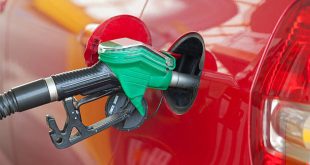
While there’s plenty of information on general hygiene, there’s less specific information on what you should do when in a vehicle. Before you get into a car, you’ll need to know how the disease is transmitted. According to the World Health Organization, the disease can spread from person to person through small droplets from the nose or mouth, which are spread when a person with COVID-19 coughs or exhales. The droplets can land on objects and surfaces around the person. If someone nearby touches these objects or surfaces then touches his or her eyes, nose or mouth, the person will likely be infected. The disease can also be spread if a person with COVID-19 coughs or sneezes and someone nearby breathes in the droplets.

It is a good idea to wash your hands before and after eating, using the restroom, providing care for people who need assistance, and sneezing, coughing or blowing your nose. Washing your hands before and after you operate or ride in a vehicle can also help. This reduces the germs you bring into a vehicle, or spread around inside, and limits the risk of transmitting the virus from your vehicle to outside buildings and other people. If you’re using a hand sanitizer, make sure it has at least a 60% alcohol content.
Washing your hands and avoiding close contact with people have become the best methods to prevent the illness. But clean hands won’t help you if the surfaces you touch are dirty. The vehicles we drive in are all susceptible to helping spread the corona virus if the proper precautions are not taken. Car interiors normally contain many different kinds of surfaces, from leather and metal to rubber and plastic. The virus can spread while sharing airspace with an infected person, the surfaces the person touched, or even the airspace after an infected passenger has left. Early reports suggest that the virus can persist in the air for up to three hours and for two to three days on stainless steel and plastic surfaces.
The good news is that it is possible to disinfect and kill the virus on external surfaces. There are several ways to prepare your vehicle to be especially clean and safe during the outbreak. Experts recommend using disposable gloves while cleaning your car interior. Most household disinfectants will work, but be sure to read the labels to make sure the disinfectant is safe to use on different surfaces in your vehicle. It’s also recommend to keep a tube of disinfectant wipes in the vehicle as an easy and effective preventive measure.

Besides the obvious places such as door handles and steering wheels, the most important part of the interior to keep clean is the dashboard. Other places to clean include the inside door buttons, seat belts, gear shifters and touchscreens. How often should you do this? While your individual circumstances with your vehicle will vary, it’s recommended to clean and disinfect touched surfaces daily.
The outside of the car is less susceptible to carrying the virus because the sun and outside weather can shorten its life span. However, it is still a good idea to clean door handles and other exterior touch points.
[/vc_column_text][vc_column_text] [/vc_column_text][stm_post_comments][/vc_column][vc_column width=”1/3″][vc_column_text] [crypto-donation-box] [/vc_column_text][/vc_column][/vc_row] Spot Dem Everything About Cars
Spot Dem Everything About Cars






